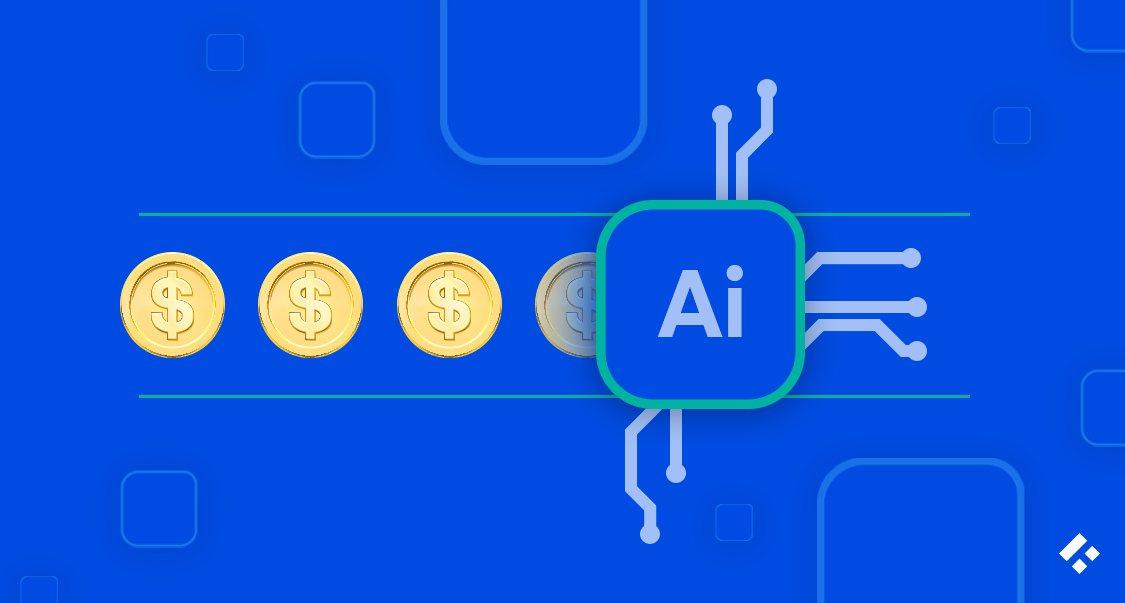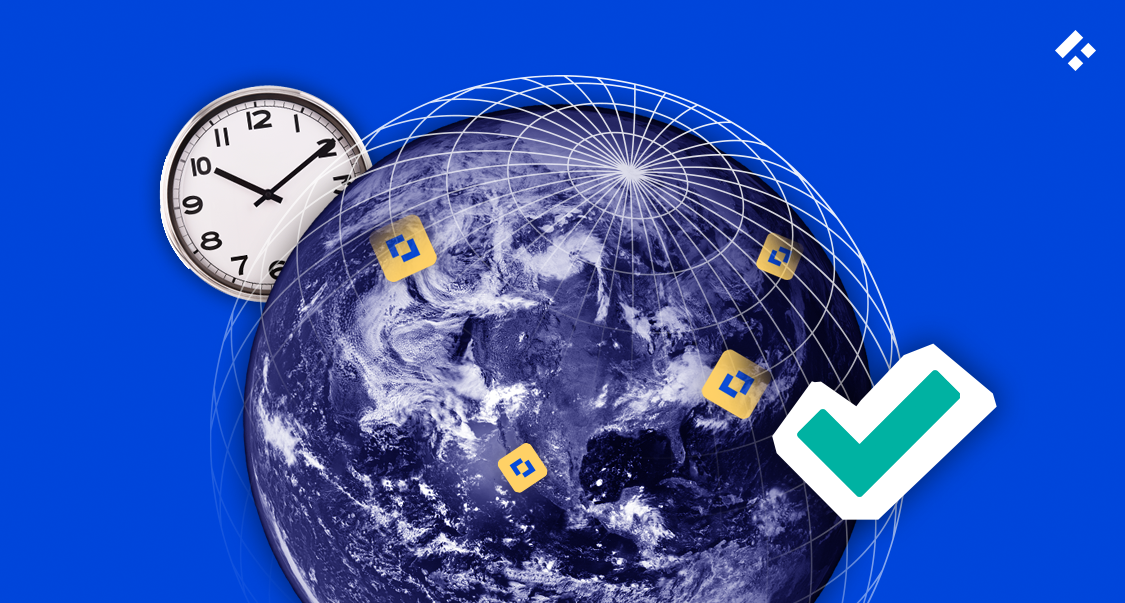If you have an end-to-end team ready to get their hands dirty but with no task at hand, then having a list of trendy full-stack project ideas might be helpful.
Besides building marketable software, you can also use these ideas to train your team or vet a potential hire. Looking for highly qualified full-stack developers already? Trio has a number of them that you can deploy on your project to ease the development process.
Full-stack development projects can be a great technical exercise if you want to expand your knowledge, but it is also a great way to build a robust portfolio and enhance employability. At Trio, we know what to look for in these portfolios to help you expand your internal teams or create a new team for an entire outsourced project.
There is no such thing as the perfect project, but these eleven full-stack project ideas do a good job of utilizing both front-end and back-end development:
- Personal Portfolio Website
- To-Do List Application
- Blog Site
- Workout Tracker App
- Content Management System
- E-commerce Website
- Food Delivery App
- Social Media App
- Chat Messaging App
- Project Management Dashboard
- AI-Powered Recommendation System
Tune in to find out why any one of these projects could be the right choice for your team and business as a whole.
Are you ready to start your development project?
We have the developers you need to take your development project in the right direction.
Companies are proven to grow their business faster with Trio.
What Is Full Stack Development?
In software development, there are generally two types of development, each with its own purpose and corresponding tech stack.
For instance, there is front-end development or client-side software.
This is where developers build user interfaces (UIs), an important part of user interactivity when it comes to navigating an app or website.
Then, there is back-end development. In back-end development or server-side software, users can not see the result of back-end programming efforts.
Yet, it still plays an important role in database management and instructing computers on how to respond to user interactions and inputs.
Application programming interfaces (APIs) also have a role in back-end development as they establish compatibility between two distinct software platforms that share information.
Full-stack development occurs when both front-end development and back-end development take place.
This means full-stack developers are equipped to handle both the presentation layer (what users see) and the logic layer (how things work), making them highly versatile in a project environment.
Regardless of how you build your project, almost every type of software development requires full-stack development.
Even hiring managers look for software developers, knowing that full-stack development is the goal.
They often employ a roster of talented front-end and back-end developers that they believe can shed light on their full-stack project ideas.
The icing on top is that there are full-stack developers who can do it all. And suffice to say, these developers are in high demand.
11 Full Stack Project Ideas by Skill Level
Front-end and back-end development on their own don’t exactly make for the most enticing projects.
To truly take advantage of a full-fledged software development team, it’s best to lean into one or two full-stack project ideas.
Here’s a list of some cool projects that might suit your business model:

Beginner Full Stack Projects
1. Personal Portfolio Website
A personal portfolio is one of the best starting points if you don’t have much full-stack experience. It allows you to practice, while simultaneously allowing you to showcase your work.
Front-end development can vary from a relatively simple, static page to something with interactive elements, responsive design, and even animations.
Your back-end can also vary in complexity, but would generally include form submission handling, connecting to a CMS, and everything involved in deployment.
2. Blog Site
A blog is often the product of a content management system.
Whether a blog patron merely wants to voice their thoughts or a business wants to write persuasive copy, a blog is the place to be.
Though a blog’s primary job is displaying words on the client-side, the server-side is essential to archiving blog posts as they accumulate.
3. To-Do List Application
To-do lists like Todoist, Microsoft To Do, and Google Tasks are simple CRUD (Create, Read, Update, Delete) apps. They are great for learning how to use front-end tools like React and Vue as they require state management and relatively simple UIs.
You can use back-end frameworks like Node.js or Express to help you handle data persistence. API interactions and database operations are also present, but aren’t overly complex, making to-do lists a great entry point to using these difficult concepts.
4. Workout Tracker
These days, workout trackers go far beyond the common pedometer.
Workout trackers like Strava and FitBit track and store user data like heart rates and run times. Over time, they provide data analysis for your performance as well.
Of course, the data bit falls in line with back-end development. However, your ability to see this data clearly and understand it is due to front-end development.
Intermediate Full Stack Projects
5. Content Management System
A content management system (CMS) is a useful tool for business users to manage and strategize content.
The basic features of a CMS include creating and editing content, reporting and tracking content performance, security protocols, role-based administration, and more.
Clearly, this app would not be as simple to build as a chat messaging app.
However, a qualified full-stack team can make sure the CMS user interface is accessible and well-organized while the data involved in content management is secure and viable.
6. E-commerce Website
An e-commerce site is a website where users buy products through an online platform.
Amazon, eBay, and any online retail store fit under this category.
E-commerce websites actually require quite a bit of back-end development.
For example, managing shopping carts throughout a visitor’s duration on the site (and oftentimes after) utilizes an impressive amount of data manipulation.
And APIs help users link their payment information securely by connecting the e-commerce site to financial systems like PayPal.
But front-end development is paramount as well. You need front-end development to display goods in a way that attracts customers and to ensure the site is easily navigable.
7. Food Delivery App
Food delivery apps have become noticeably popular over the years.
Grubhub, Doordash, Postmates, and Uber Eats are now household names in the food delivery app brigade.
They’re a great convenience for people who need their stomachs fed without all the labor of grocery shopping, meal planning, and cooking.
But in order to meet this need, food delivery apps must make sure restaurants and food orders look enticing with fine-tuned pictures that users drool at from the client-side.
Similarly, app responsiveness is an imminent priority for hungry users. Both front-end and back-end development have a hand in this.
Food delivery apps must store your order in a database as well. Most, in fact, never empty your cart, an impressive product of back-end development.
Advanced Full Stack Projects
8. Social Media App
A social media app should be pretty self-explanatory if you’re not living under a rock. But pink, animated starfish are people too.
So, you should know that social media apps consist of interactive technology that allows large networks of people to communicate online.
You can imagine a grand amount of front-end development goes into allowing users to scroll through various forms of media and blocks of text.
On the back-end, storing the interactive data of millions of users is quite a task too.
9. Chat Messaging App
Chat messaging apps are usually intertwined within social media platforms.
On their own, a chat messaging app would simply be a program for exchanging messages in a group or with individual users.
If you remember AOL Messenger from back in the day, then you have the right idea.
Since chat messaging apps aren’t really complex, the crucial element in this scenario is permitting users to see past messages.
Naturally, this requires both the work of front-end development and back-end development to present messages in the first place and then save them for future reference.
10. Project Management Dashboard
Project management dashboards range from software like Trello to Jira.
These dashboards are integral for companies, small and large, who want to systemize task management in a reliable way.
One of the biggest advantages of dashboards is that their UIs are built to give an uncluttered appearance, which helps teams to keep things organized.
They also work with APIs so users can upload attachments from Google Drive or Dropbox. And data management is a given.
11. AI-Powered Recommendation System
AI-powered recommendation systems are usually portions of larger e-commerce apps like Amazon, Etsy, and others. They are usually created by applying machine learning to full-stack development.
Usually, machine learning will be used to analyze a user’s behavior, sometimes both in the app and in other apps, and suggest relevant content or products.
Python is one of the most popular languages for the back-end side of things, while React, Node.js, and PostgreSQL are also used.
The reason we’ve chosen this as one of the most complex full-stack projects you could decide to work on is because of the myriad of challenges you will likely face, including data modeling, algorithm tuning, and integrating predictions into user interfaces.

Subscribe to learn more about Hiring
Incorporating Emerging Technologies in Full-Stack Projects
Emerging technologies like artificial intelligence, blockchain, and the Internet of Things (IoT) are being incorporated more and more often.
Consider how AI is being used to build chatbots. Tools like OpenAI’s API or TensorFlow.js are making it a lot easier to respond to customer queries in real time. Blockchain is being used in Fintech and other apps that need incredible security, like decentralized voting apps that use smart contracts.
Smart home devices are the pinnacle of emerging IoT apps; dashboards can allow users to control their appliances, but this means they need to be able to send and receive data in real time. Tools like MQTT or WebSockets are the go-to for this.
How to Structure Your Full-Stack Project
The best way that we have found to structure a full-stack project is to separate the different parts of the tech stack into distinct folders. You can further organize your code by feature to help you scale more easily.
Follow consistent API design patterns using REST or GraphQL, and document your endpoints. It is also a good idea to use environmental variables to handle sensitive data like API keys and database connections, while making use of tools like ORMs to keep your database logic clean.
You should structure your project to plan for growth and performance from the start, so make sure that you use pagination, caching, or rate limiting where needed and test often to improve reliability.
Conclusion
Now it’s time to take these full-stack project ideas to the brainstorming table and figure out what your next step is.
But remember, if you need an experienced developer to jumpstart your project, particularly a full-stack developer, Trio is at your disposal.
Our developers are not only capable of understanding the entire tech stack and setting you up to scale from the start, but are also focused on continuous learning, allowing them to adapt to new technologies and help you integrate the latest trends into your apps.
If you are ready to get started, reach out to us for a free consultation!
Are you ready to start your development project?
We have the developers you need to take your development project in the right direction.
Companies are proven to grow their business faster with Trio.






